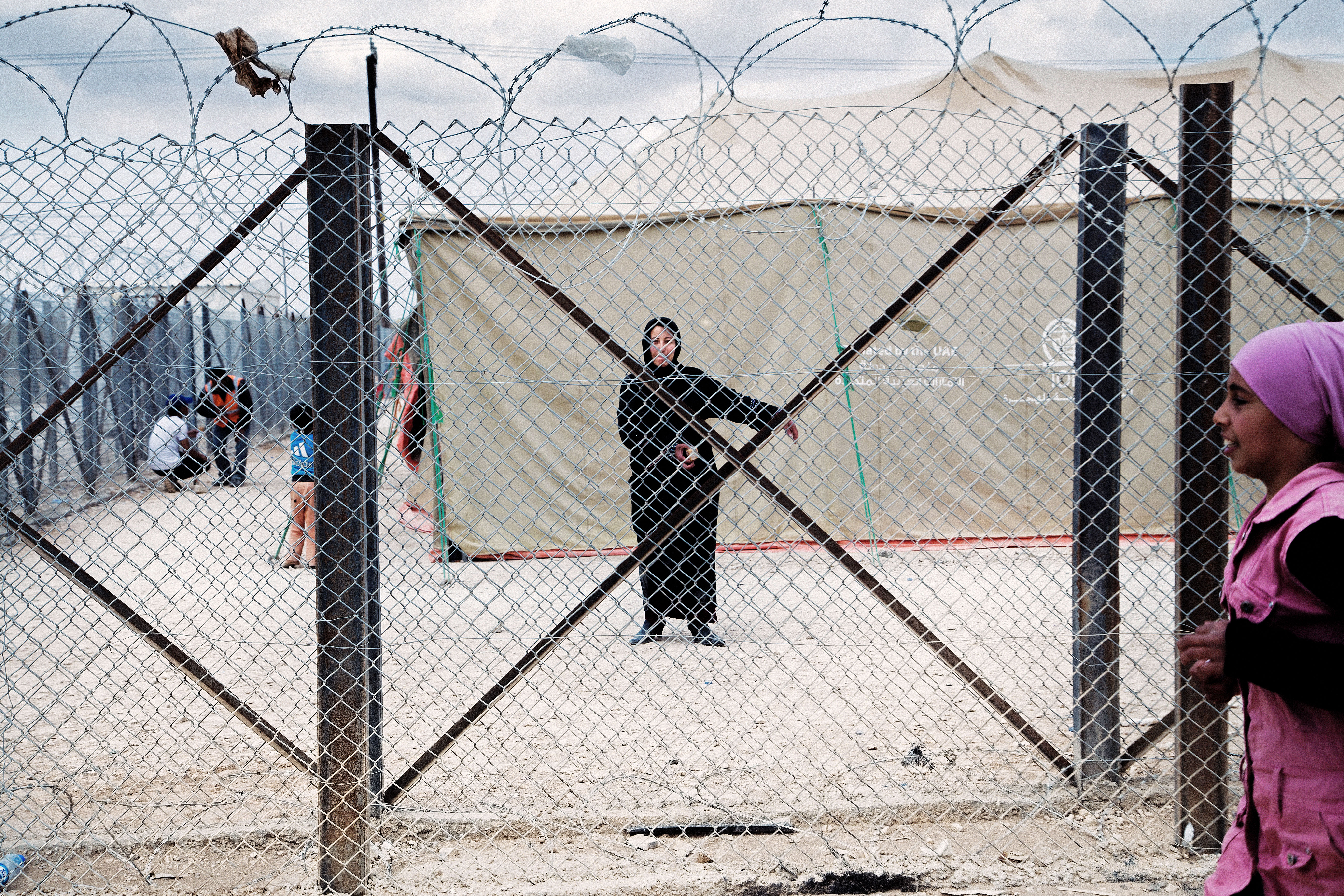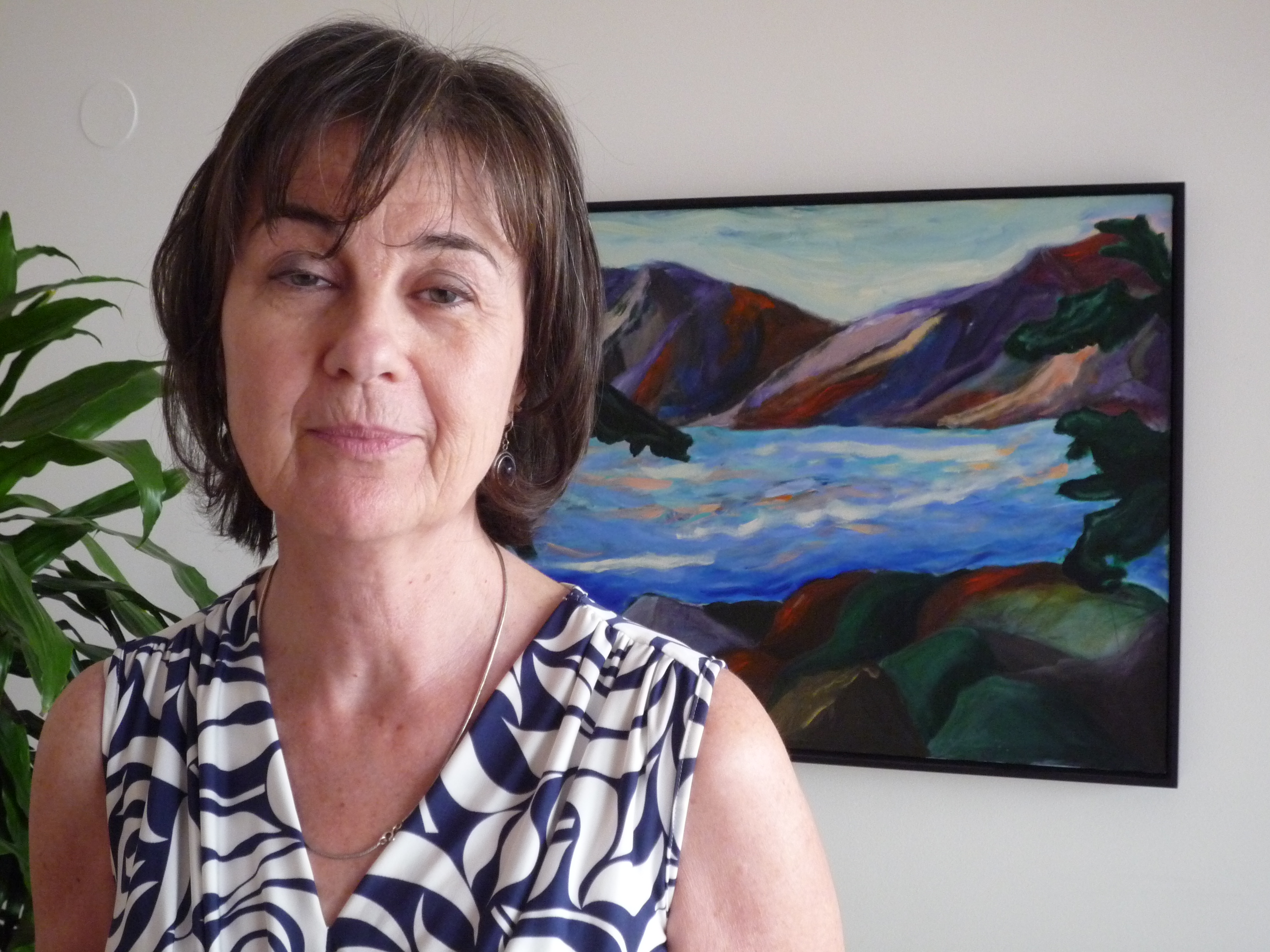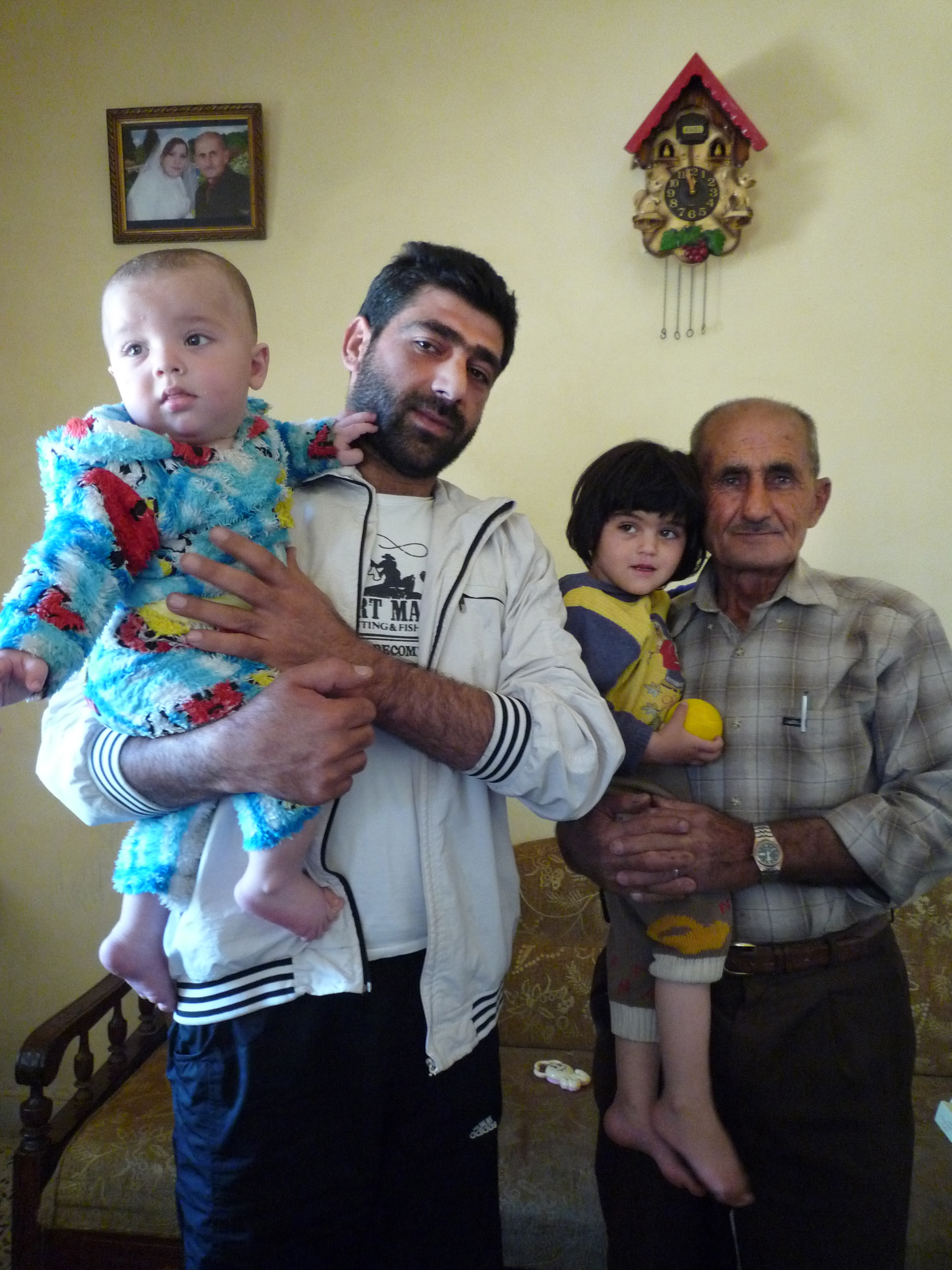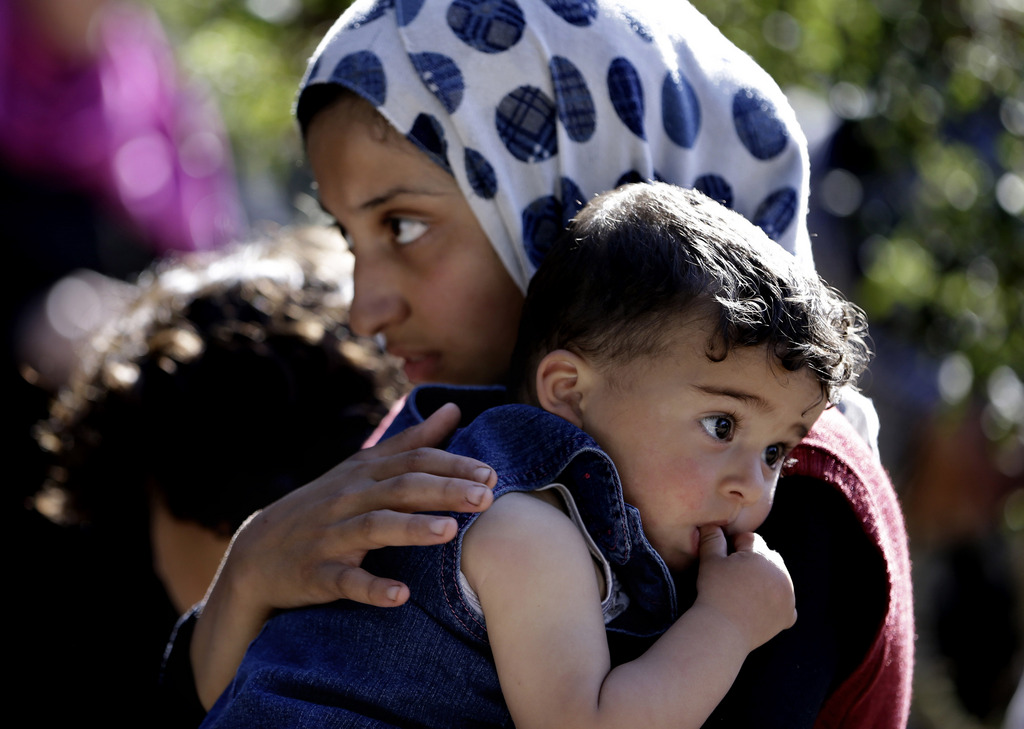Refugees struggle to survive in new Lebanese homes

Traumatised by the horrors of war, waves of Syrians continue to pour into Lebanon despite difficult living conditions in the tiny Mediterranean country – a quarter of the size of Switzerland with a population of four million.
“I had to flee with our two girls and leave my husband behind and I’m going to deliver in less than one month… I don’t know how I’m going to cope on my own,” declares *Narwal with a deep sigh.
Staring blankly into space, the heavily pregnant young woman from Homs leans back on a plastic chair inside the tiny makeshift tent she shares with another refugee family.
“I was at home with the children when heavy shelling started. I didn’t know what to do so I called my husband who was working. He told us to leave immediately and said he would join us later,” the 22-year-old mother of two girls explains.
Ten days ago a taxi driver dropped her and the children at the tented settlement on the outskirts of Bar Elias in eastern Lebanon’s Bekaa Valley with little more than the clothes on her back after paying him 12,000 Syrian Pounds (CHF160) to cross legally. A man promised to help her husband cross illegally into Lebanon for $2,000. Since then she has had no news from him.
Outside the tent a low early-morning mist still hangs over the sunny fertile valley. Two men spread concrete under a new wooden tent frame before it receives a plastic wrapping and new refugees.
Settlements are not a new phenomenon in the Bekaa. Prior to the crisis, they could be found dotted throughout the region belonging to Syrian migrants who came to work the land or harvest fruit and grapes. Since 2011 thousands of migrants have stayed on and sent for their families.

More
‘It’s a terrible tragedy’
Mushrooming
Today the 600-800 new refugee families arriving each week in the region face limited, expensive housing options. Earlier arrivals can also no longer afford apartment rents; consequently, the number of rough-and-ready settlements has mushroomed to around 230, housing around 20 per cent of refugees officially living in the Bekaa.
Aid officials say tented settlements are growing faster than they can keep up with and worry about the cramped structures built on arable land with poor drainage and few latrines or showers.
The cash-strapped United Nations Refugee agency (UNHCR) and partners provide wood and plastic sheeting for shelters, offer cash-for-rent to the poorest, and carry out water and sanitation activities and a mobile clinic service among other essential activities. But life in Lebanon remains expensive for the Syrians. A private landowner charges $160 a month for each tent in which up to three families squeeze in. And more refugees means work is hard to find or non-existent for many.
“Here people work about ten days a month,” says *Sokol, who also lives at the Bar Elias settlement with 60 other families. “Neighbours ask us to clean or fix things for them and give us a little bit in exchange. It’s hard to survive here. I wouldn’t advise friends or family to come right now.”

More
Life in Jordan’s desert city
Urban survival
In the northern Lebanese city of Tripoli the cost of living is about half that in the capital Beirut. But for the 140,000-plus refugees battling to make ends meet, similar complaints can be heard.
“We’re not used to the high costs of living. It’s particularly difficult as there is no work,” explains *Hanaa, who fled violence in Aleppo seven months ago together with her husband and six children. “The only help we get is from the UN – no one else.”
‘Home’ is a spartan apartment in a UNHCR-renovated ‘collective shelter’ equipped with the bare essentials like a fridge, stove and sink, which they share with other families on the third and fourth floors of a run-down building in the centre of the city.
“Almost all our savings were used up in Syria as our men couldn’t work. So when we came here we had nothing,” says Hanaa.
“My eldest son is disabled. He’s out walking around. He can’t stay inside as he’s frustrated and feels he has no purpose anymore.”
Host hospitality
While the numbers of tented settlements and collective shelters are growing, the vast majority of refugees are staying with friends, relatives and Lebanese host families.
Thirty-one-year-old Mohammad and his young family from rural Damascas, who fled bombs to Al-Rafid in south-eastern Bekaa Valley one month ago, were extremely fortunate to bump into Salim Charefiddin one night.
“I was driving along and suddenly I saw them waiting with their suitcases by the side of the road,” says Salim, a Lebanese-Canadian who works as a taxi driver. “They told me they were looking for somewhere to live. I told them it was not easy due to the large numbers of refugees but I was willing to host them in my house until they find something else.”
The 72-year-old and his family live in one bedroom, and Mohammad his wife and son use the other. They both share the bathroom and kitchen, which Salim admits is starting to become difficult for both families. Salim is also helping his new tenant look for work as a mechanic.
“I met some people who promised they would help. I’m still waiting to hear but I’m hopeful,” says Mohammad. “It’s not easy. Even the Lebanese face problems due to the large number of Syrians here. It’s become a burden for them.”

Cracks appearing
Despite huge numbers arriving from Syria – now at least one tenth of the population – aid officials repeatedly praise “remarkable” Lebanese hospitality towards Syrians. Yet the continued massive influx is understandably starting to put unbearable strains on host communities, especially in the poorest parts of the country, and cracks are starting to appear.
Complaints can be heard about rising rents, overcrowding, unfair competition, refugees accepting lower wages, tapping illegally into the electricity network and petty crime. Over the past month there have been a number of small protests in the north over jobs linked to the presence of Syrians.
Local municipalities welcoming large numbers of refugees are stuck between a rock and a hard place as they don’t want to be seen to be accepting large numbers but still give generous support to refugees.
The issue is touchy as Lebanon suffered its own civil war from 1975-1990 during which the presence of Palestinian refugees was a contentious factor. The country has seen tensions and clashes between supporters and opponents of Syria’s embattled president Bashar al-Assad.
The vast majority of refugees arriving are Sunni Muslims. There are concerns that Lebanon’s delicate sectarian fault lines between Christians, Sunni and Shi’ite Muslims could be exacerbated by the fighting in Syria and any possible spillover.
The country is not well-equipped to manage this crisis, says Ninette Kelley, head of UNHCR’s Lebanon operation: “We’re facing a huge crisis of unprecedented proportions for Lebanon. The country is crying out for additional support from the international community not only to meet the needs of refugees but to guarantee its stability.”
*[names withheld]
According to the United Nations, some 4.25 million of Syria’s 23 million people have been internally displaced by the conflict. Almost 7 million urgently need humanitarian assistance, of whom half are children. Syrians forced by the ongoing violence to leave their homes are often displaced more than once and are concentrated around Aleppo and rural Damascus.
Aid organisations face many hurdles to reach families in need, including visas delayed for up to two months, a three-day notice requirement imposed on all aid convoys and other bureaucratic delays, dozens of road blocks, and a reduction of approved non-government organizations (NGOs) from 110 to 29.
The number of people leaving Syria has increased dramatically since the beginning of the year. Over 1.5 million refugees have fled to neighbouring Jordan (473,587), Lebanon (470,457), Turkey (347,157), Iraq (147,464) and Egypt (66,922) [figures at May 15].
According to Kristalina Georgieva, the EU’s Humanitarian Aid Commissioner, “unless all those involved in the fighting as well as the international community find a political solution to the violence very soon the humanitarian community will simply be unable to cope with the unprecedented scale of the needs – we are already at breaking point.”
The UN says at least 80,000 people have been killed in the increasingly sectarian struggle between armed rebels and government soldiers and militias in Syria.

In compliance with the JTI standards
More: SWI swissinfo.ch certified by the Journalism Trust Initiative













You can find an overview of ongoing debates with our journalists here . Please join us!
If you want to start a conversation about a topic raised in this article or want to report factual errors, email us at english@swissinfo.ch.